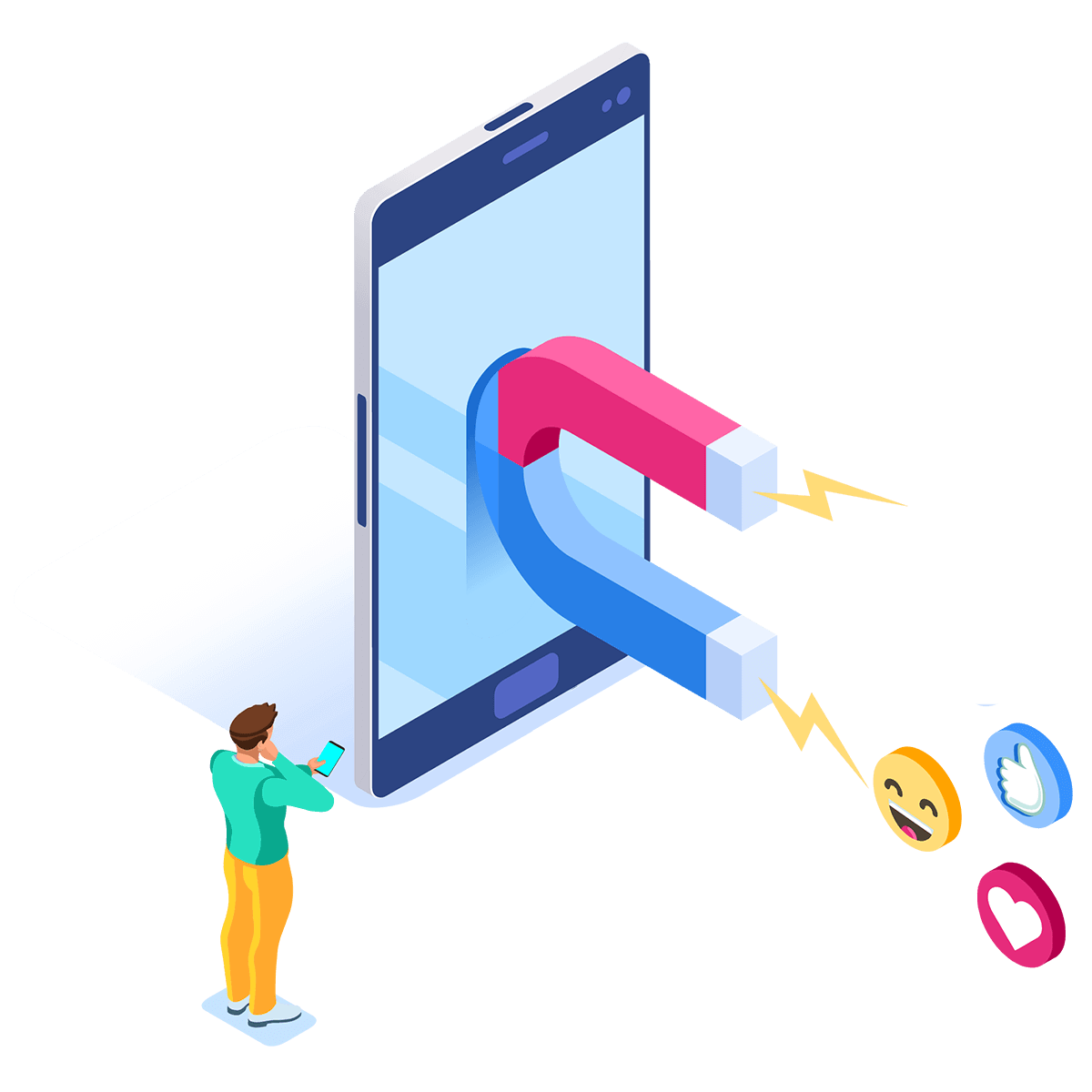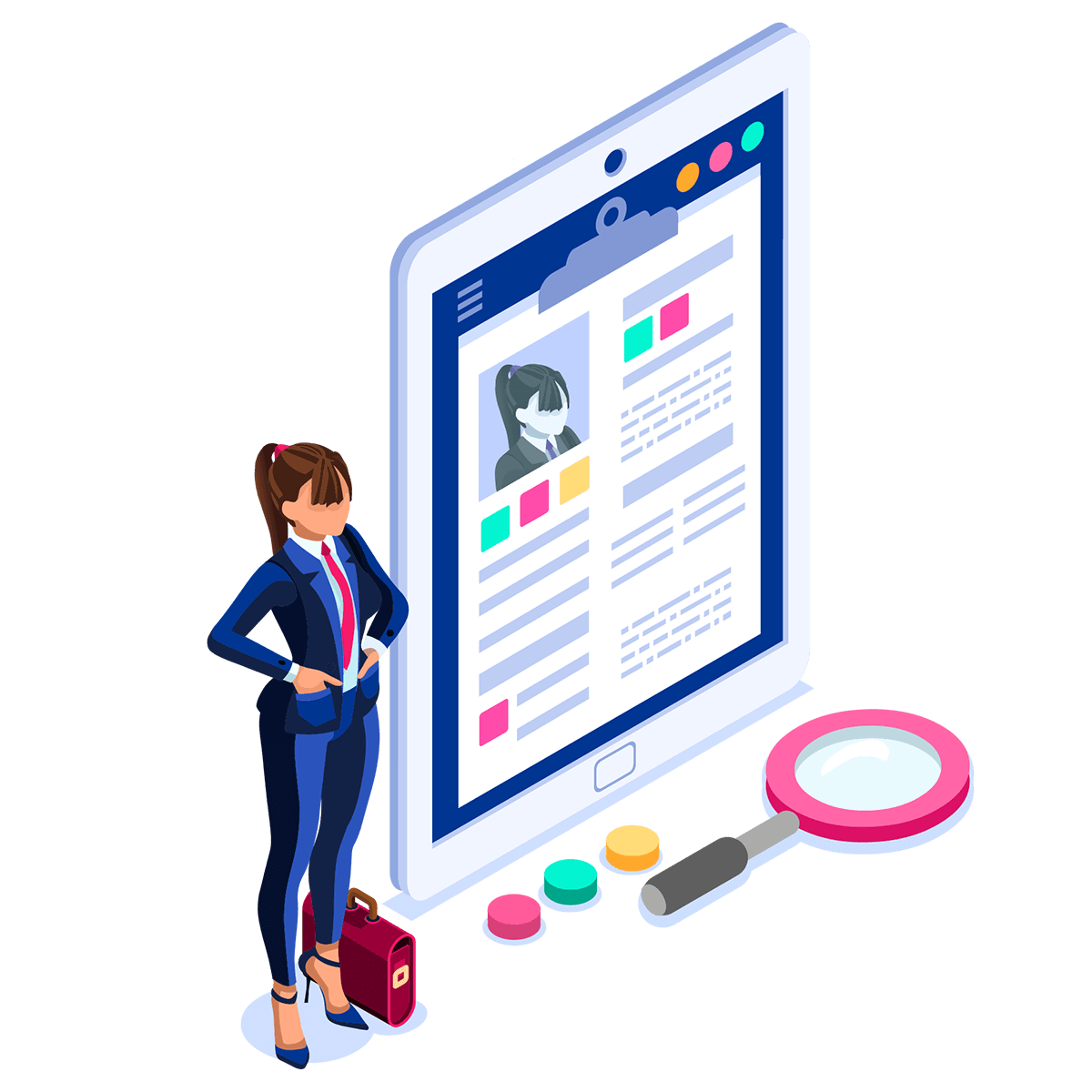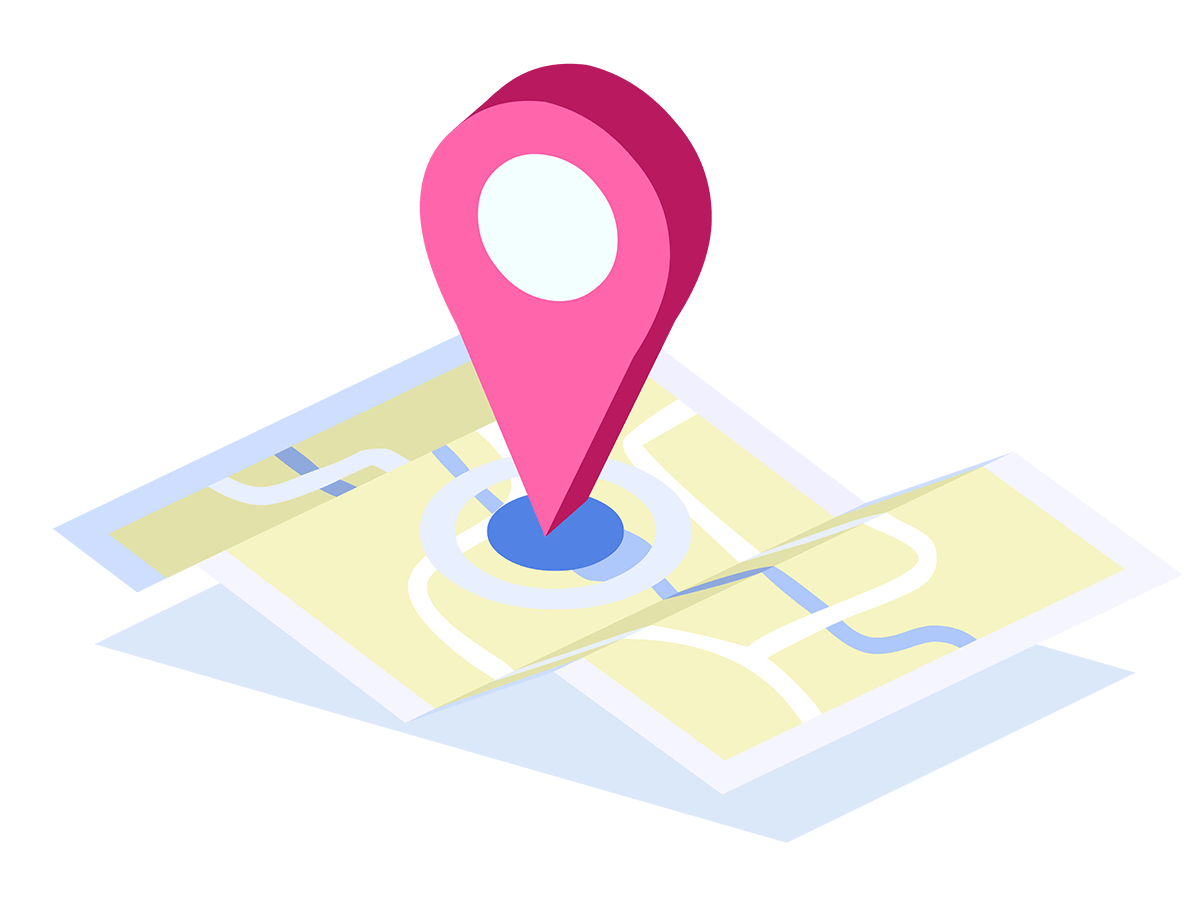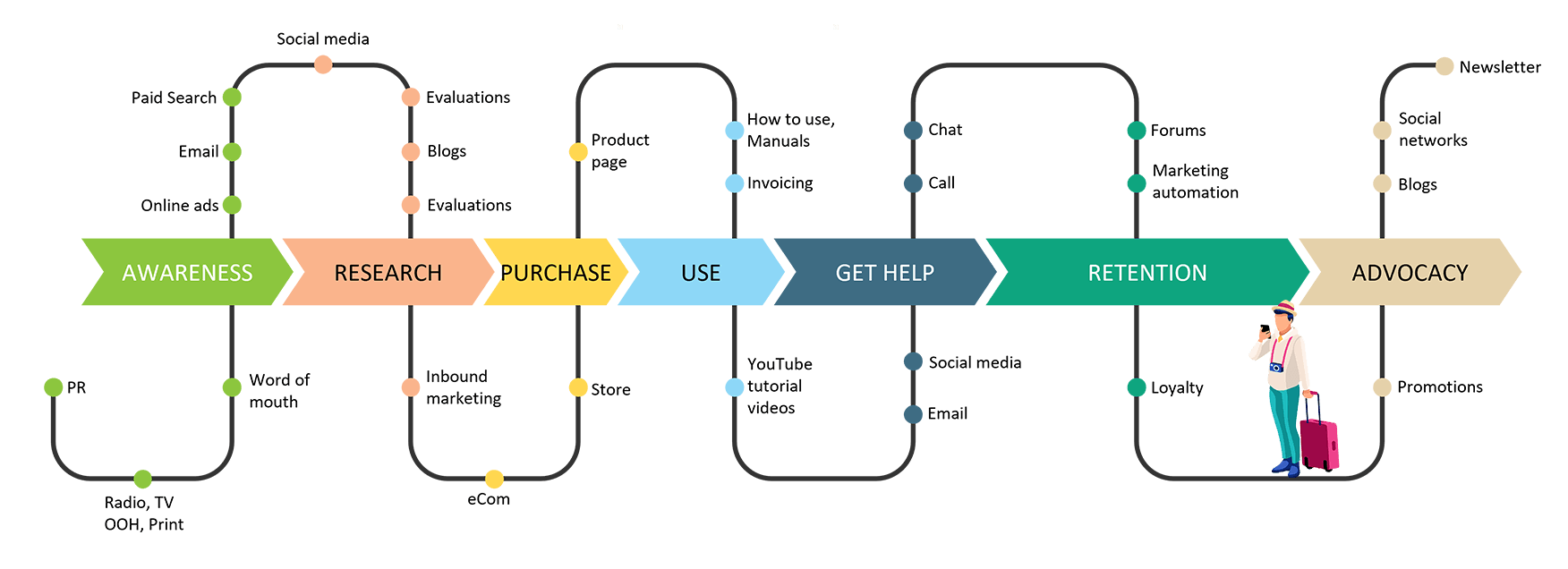
Marketing automation creates quick wins
Marketing automation intensifies measurement and continuous marketing processes. It is used to automate routines, such as sending automated and personalized messages to existing and new customers at the right stage of the customer journey. The basic functions of marketing, such as analytics, communication, and campaigns, work together seamlessly and cost-effectively.
To function perfectly, marketing automation needs a system that collects and combines the right data according to a company’s KPIs and business goals. The data is used to analyze and deliver messages at the right time through emails, SMS, social media channels or, depending on the chosen system, through push notifications. Most of marketing automation programs enable sending messages directly from the system itself or in addition utilizing the enriched customer data in different advertising platforms, such as Meta or Google.
We help our customers to choose the solution that is the best fit for their goals. Our marketing automation partners are, for example, HubSpot, Custobar, Voyado, and Dotdigital.
We’ll help you get started
The right automation system combines data and automates and facilitates sending messages to the right target customer segments – above all, at the right time. Automated marketing operations pay themselves back quickly. When you need to boost marketing automation, we are the right partner for you.

Partner for the powerful use of marketing automation
Effective use of marketing automation requires planning, correctly measured data, content strategy, and continuous analysis. In terms of success, the most important thing is that you don't just transfer the current digital marketing processes to a new, beautiful, and expensive platform, but adjust the functionalities of the system to your needs. The new generation platforms have a considerable number of functions, of which, unfortunately, only about 10 percent of their capacity is used on average. With the new marketing automation system, it is also worth looking at your own marketing processes and evaluating their performance.
For getting the most out of your marketing automation, choosing the right solutions and consultation partners is crucial. As your marketing automation partner, we can provide you with our expertise to build you a service package that fits your needs.

Our services for marketing automation
Marketing automation offers tremendous opportunities for businesses, but it is not an automatic key to happiness. Effective implementation requires proper work and planning, which then lead to business benefits.
Our services for marketing automation help you to manage the customer life cycle and experience at all stages of the customer journey. Our services are not limited to only one marketing automation system. Hence, we can help our customers connect their business goals to successful marketing automation performance, regardless of the system.
Depending on your needs, we offer help with the introduction of a new marketing automation system step by step or, alternatively, training and consulting for the efficient use of the old system. In addition, we offer continuous Growth services or individual projects that can be comprehensively scaled to your business and needs.

Continuous Growth services:
- Email marketing
- Analyzing and reporting
- Content production
- System maintenance services

Growth projects for specific needs:
- Creating a content and communication strategy
- Understanding buyer personas and the purchase path
- Lead generation
- Effective utilization of CDP data

Onboarding service:
- Defining requirements and choosing the right automation system
- Technical installation and necessary integrations
- Defining metrics and goals
- Building the first automated campaign model
- Developing content strategy and communication
- Training and reporting

Inbound is the core of Marketing Automation
Marketing automation goes hand in hand with the inbound methodology. Inbound emerged alongside traditional outbound thinking when more easily accessible and approachable options began to appear on the market for consumers. Traditional marketing operations focused on telling customers what they needed, while the modern inbound method focuses on producing content and messages according to customers’ actual needs.
As today's customers vote with their feet and wallets, the focus of the right kind of communication strategy is to generate added value for them. Above all, it is a matter of changing the way of thinking from short-term marketing to longer-term content creation and sharing. Engagement with the customers is gained through good content, instead of trying to grasp their attention with short-term campaigns.
The marketing automation system is a key tool for implementing inbound marketing. By collecting and enriching your own data, you enable effective remarketing and the cost-effective discovery of new prospects and leads. A correctly chosen automation system combines data from different sources and automates and facilitates sending the right messages to the right target groups - above all, at the right time.

Defining a buyer persona
You may have heard about customer journeys and buyer personas, which are at the core of today's content strategies and inbound marketing. However, modeling the customer journey or figuring out personas is not always that easy - and if implemented incorrectly, it may take your marketing actions in the wrong direction.
Buyer personas are educated guesses about a company's ideal customers. In addition to demographics, the data includes psychographic characteristics, such as the customer's values, attitudes, and interests. Demographic information, such as age, gender, or place, is most often found in customer data. Properly utilized customer data reduces errors in the targeting of paid advertising and guides content production and decision-making ¬– even product and service design. With the right tools, your customer data can be enriched to enable better marketing decisions.
You can start outlining the buyer persona with, for example, the following questions:
- How old are our buyers?
- Where do our customers live?
- What communication channels do they prefer?
- What kind of work do they do?
- What is the educational background of our customers?
- What is their marital and family status?
- What are the main points of interest for our buyers?
In addition to these, never forget to answer the question:
What are our customers' problems and challenges for which we offer a solution?

Modeling the customer journey becomes easier with the right tools
The customer journey reflects the buyer persona's path from a potential to a converted customer. The customer journey is built from all the touch points where the customer interacts with your company. A customer’s journey does not end with conversion, like in a traditional funnel, but also takes into account the customer's entire life cycle.
In B2C, the customer is often also the end user. In B2B, the customer journey can be considerably more complicated. The person making the purchase decision is not necessarily the end user. In addition, there are on average more than five decision-makers involved in B2B. Inbound marketing can create significant value to decision-making by offering great content supporting the decision-making process.

Modeling the customer journey is a great way to analyze customer behavior and create powerful messaging. The benefits of customer journey modeling are:
- Identifying touchpoints
- Improving the customer experience
- Controlling content marketing
- Timeliness of messages in the right channels
- Development of personalization
- Efficient allocation of the marketing budget
With the help of data, you can identify at what stage the customer enters the purchase path, which channels work most effectively in terms of conversion, and what kind of messages should be delivered to customers at each stage of the purchase path. When modeling the customer path, you should use versatile data, such as the website's own analytics, data provided by social media, data from newsletters, and of course customer feedback and comments.
Are you involved in all touchpoints?
If not, can you afford it?


Content marketing as part of the content strategy
With the help of a content strategy, you define how your organization's content production works in practice and how it adapts to the company's entire strategy and business. Content marketing, on the other hand, is the implementation of the content strategy itself, where you target marketing communications in different channels to the desired buyer personas, guiding them toward conversion and customer loyalty.
Content marketing is not so much a one-sided flow of messages by campaign on different channels, but an interaction with your company's customers. This includes sharing useful and interesting information with customers, for example videos, blogs, articles, tests, or podcasts. Content marketing is implemented first and foremost from the customer's point of view, taking into account their needs and preferences.
Content production together with correctly collected data is the fuel of marketing and strategy. Content creation is supported by customer data, because to communicate with your customers, you must first know them. When you know your customers, you can start testing how different contents affect them at different stages of the purchase path. High-quality testing requires setting the right measurement points. Properly targeted content enriches customer data, giving you more fuel to develop your content marketing.

Content production requires time, insights, skills, and resources. The content should not be treated as product advertising. It can take a perspective of current issues, industry phenomena, or the company values. Knowledge of search engine optimization is also important in content production. You need to know the search terms used to search for the company's services.
The marketing automation system facilitates the implementation, measurement, and further utilization of content marketing in data enrichment. By combining customer data and content data in the same place, you will be able to identify certain behavioral patterns and the most effective means for content marketing.
With the help of a system, the targeting and distribution of messages become easier and more efficient. At best, you can also connect your product data to the system, which allows you to identify customers interested in certain product groups. In this way, you can automatically offer personalized product and service communication to specific segments.

Automated campaigns
When the data and content strategy as well as the understanding of buyer personas and the customer journey are in order, it is time to start implementing automated campaigns.
The simplest example of automated campaigns is a well-designed Welcome model for new customers and newsletter subscribers. This is how it works in practice:
- A new customer comes across the company's content, advertisement, or channel while browsing topics of interest.
- Attractively written content together with the right CTA (Call-To-Action) will attract the customer to click.
- The customer fills in the newsletter subscription field and flows automatically to the customer group "newsletter subscribers".
- The system recognizes the new customer and automatically sends him a Welcome email according to predefined conditions, which contain exactly the information that the customer expected to receive after reading the information on the landing page.
- Your joint journey with the customer has begun. In the future, the customer can enjoy regular messages that contain relevant information. In time, this can lead to purchase and customer loyalty.
The Welcome model is a very simplified campaign at the beginning of the customer journey, which helps your company increase customer data and find leads that become conversions. However, the construction of automated campaigns should not be left at this stage – instead they should be tested by combining other channels with email marketing, such as social media platforms or text messages.
Remember that what works for one company may not be the key to happiness for another. For this reason, continuous analysis and testing are crucial for designing and development of automated marketing campaign models.

Your expert
Juha Vuohelainen
Director, Digital Strategy
Leave a message
LATAA
Markkinoinin automaatio opas
Lähetämme latauslinkin sähköpostiisi.












